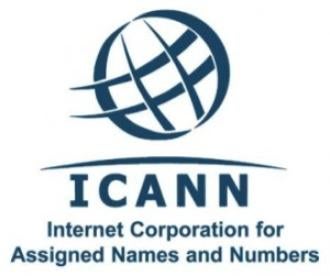ICANN’s new Generic Top-Level Domain (gTLD) program has been in full swing for over a year now, so it seems an apt time to examine some statistics as to how brands are engaging with new gTLDs, utilizing the Trademark Clearinghouse (TMCH), and which new gTLDs may give .com a run for its money.
gTLD Registration
While ICANN is expecting more than 1,300 gTLDs to go live in the following years, for the moment only slightly more than 400 are available. Despite the relatively slow roll-out of new top level domains (the characters following the ‘.’ in a domain name), the total number of registrations within these new domains has exceed the one million mark.
To date, the top five strings sitting atop the gTLD registrations list are: .xyz, .club, .guru, .berlin, and .photography. The most popular new string .xyz, which is marketing itself as an alternative to the crowded .com registry, has amassed nearly 525,000 registrations alone.
Interest and Adoption by Top Brands
World Trademark Review (WTR) recently explored the .xyz domain registration of the 50 most valuable brands and found that 80% had either registered or blocked their brand in this space. WTR’s review also found evidence of prevalent cybersquatting; for example, a single individual currently owns the domains names “americanexpress,” “honda,” and “homedepot” in the .xyz space.
In general, the levels of brand adoption and interaction with the gTLD program overall remains inconsistent, with some brands significantly more pro-active than others in their fields. Even when it comes to the Trademark Clearinghouse (TMCH), companies traditionally known for brand protection, including RedBull, Nintendo, and Blackberry, have evidently decided not to register their marks with this rights protection database
Trademark Clearinghouse
The TMCH is ICANN’s centralized database of registered trademarks related to the new gTLD program. According to the most recent figures released by the TMCH, nearly 33,000 marks from 103 countries and covering 119 jurisdictions have been submitted. These marks represent protection for over 11,000 brands and businesses worldwide. Of the marks submitted, 87% have been registered by a trademark agent, approximately 50% for multiple years, and nearly 98% have been verified. The TMCH will still be accepting mark submissions and renewals indefinitely, and approximately 7,000 marks have been submitted since the beginning of the year. On November 5 of this year, the first group of TMCH registrations will be up for renewal.
The TMCH is also tasked with delivering Claims Notices to those attempting to register a domain name matching a trademarked term. In March the Clearinghouse revealed that in excess of 500,000 Claims Notices had been issued, and 95% of the infringing domain registrations were no longer being pursued. The TMCH hailed the number of delivered Claims Notices as an indication of a “high level of interest in trademarked terms from third parties,” and proof that “protection mechanisms are working.”
But, while these findings appear to suggest the success of defensive mechanisms, there are at least two alternative interpretations of the data that likely influence these numbers. First, many of the infringing domain registrations were likely the product of data-mining and unlikely to have been pursued regardless. The second is that the sheer number of Claims Notices being issued may be keeping individuals with valid applications on the sidelines. Regardless of the reasoning behind the Claims Notices, they are at least evidence of the popularity and interest surrounding the new gTLD program.
gTLD Round Two?
As the first expanded gTLD round rollout progresses towards conclusion, ICANN has begun planning the second round. The organization has stated publically that the next round is expected in 2016 at the earliest,” but experts believe 2017 is a more realistic time frame.
In preparation for the second round of gTLDs ICANN has published a Draft Work Plan. The 27 page document details several sets of reviews and activities scheduled to guide consideration for the second round of applications. The plan addressed program implementation reviews, root stability, rights protection, the GNSO, and competition, consumer trust, and choice reviews.
As the gTLD space continues to expand indefinitely, brands will have to continue to monitor and reassess how to navigate this dynamic landscape.




 i
i


